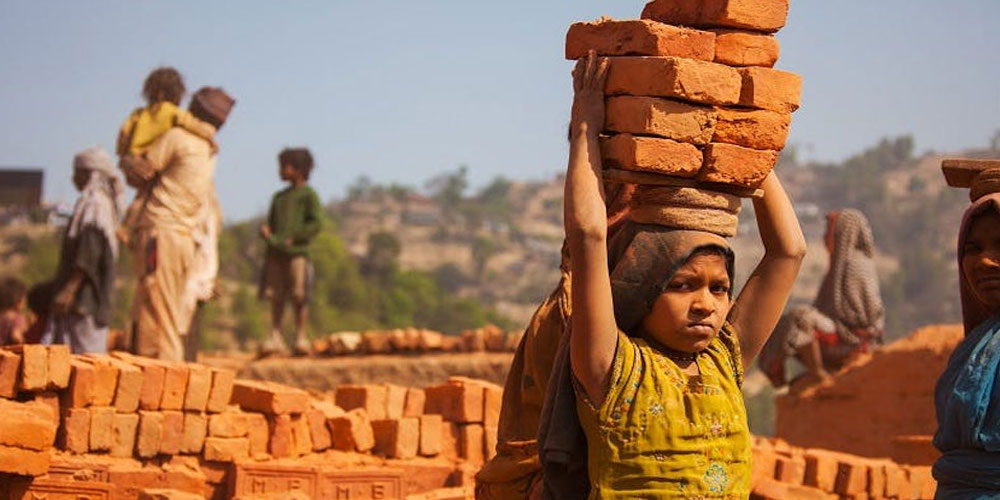Child Labour in India: A Legal, Social & Ethical Perspective

Child labour remains one of the gravest crime against humanity. Despite constitutional mandates, international conventions, and numerous welfare schemes, a mushroomed strength of vagabond kids is found in factories, fields, households, and markets. The prolonged existence of child labour reveals ingrained flaw in system leading to societal insensitivity, and a collective apathy that must be urgently addressed. Child labour remains a pressing concern in India, despite legal prohibitions and global commitments. Millions of children are pushed into work due to poverty, lack of education, and systemic failures. While laws exist, enforcement remains inconsistent, and socio-economic conditions continue to compel children to become part of the workforce. deep moral and legal paradox in the fight against child labour: when a child, full of life and curiosity, engages in labour not out of coercion but from a perceived necessity or agency yet in complete contradiction to law and child rights
Causes of Child Labour
• Poverty and Economic Necessity
Poverty is the most immediate cause of child labour. Families struggling for survival often see children as supplementary wage earners.
• Lack of Access to Quality Education
Poor infrastructure, inadequate teacher availability, high dropout rates, and unaffordable schooling push children towards work rather than classrooms.
• Informal Economy and Exploitation
A large proportion of child labour occurs in the informal sector, where laws are easily flouted and inspections are rare.
• Cultural Acceptance
In some communities, child labour is seen as a part of growing up or a tradition, especially in family-run businesses or agriculture.
• Migration and Displacement
Displaced families or migrant labourers often have no safety nets, resulting in children being roped into work for family survival.
Indian Laws Governing Child Labour
(a) Constitution of India
• Article 24: Prohibits employment of children below 14 years in factories or hazardous jobs,
• Articles 39(e) & 39(f): Directs the state to protect children’s health and provide opportunities for development,
• Article 21A: Right to free and compulsory education for children aged 6-14,
(b) Child and Adolescent Labour (Prohibition and Regulation) Act, 1986 (Amended in 2016),
• Prohibits employment of children below 14 years in all occupations except family-based work and child artists,
• Prohibits adolescents (14–18 years) from working in hazardous occupations,
• Enhanced penalties for violations.
(c) Right of Children to Free and Compulsory Education Act, 2009 (RTE Act),
• Mandates free and compulsory education for children aged 6 to 14,
• Supports removal of children from work and reintegration into school,
(d) Factories Act, 1948
• Prohibits employment of children below 14 in factories,
• Adolescents (15–18) may work only after certification of fitness and under regulated hours,
(e) Bonded Labour System (Abolition) Act, 1976
• Prohibits any form of bonded labour, which often affects children from poor families,
International Legal Frameworks
(a) ILO Conventions
• Convention No. 138: Minimum Age Convention,
• Convention No. 182: Prohibition of the Worst Forms of Child Labour,
India has ratified both.
(b) United Nations Convention on the Rights of the Child (UNCRC),
Failure of the Governmental System
Weak Implementation of Laws
Though laws like the Child Labour (Prohibition and Regulation) Act, 1986 exist, enforcement is weak. Inspections are inadequate and punitive measures for violators are minimal or delayed.
Corruption and Collusion
In many cases, enforcement agencies are either indifferent or complicit with employers of child labourers, especially in industries like textiles, fireworks, mining, or domestic work.
Insufficient Rehabilitation Mechanisms
Even when children are rescued, there are inadequate rehabilitation, vocational training, and integration efforts. Most often, they relapse into labour due to lack of alternatives.

Compelling Poverty Conditions
• Economic Compulsion: Families push children into work for survival,
• Debt Trap: Children work to repay loans or as bonded labourers,
• Lack of Access to Quality Education: Poor infrastructure and disinterest in school lead children to drop out,
• Gender Disparity: Girls are often employed in domestic work, unregulated and invisible.
Ground Reality and Challenges
• Invisible Labour: Much child labour occurs in informal sectors like agriculture, domestic work, and family businesses — hard to track,
• Loopholes in Law: The 2016 amendment allows family-based work, often exploited by employers to bypass restrictions,
• Inadequate Enforcement: Labour inspectors are few; convictions are rare,
• Reluctance to Report: Fear of losing livelihood or family honour prevents reporting of violations.
Contradictions and Legal Gaps
• Family Enterprise Exception: Allows children to work in family businesses, vague and hard to monitor,
• RTE vs. Child Labour Law: Despite RTE mandating education, some forms of labour are still permitted,
• Adolescent Labour: Non-hazardous work is allowed for 14–18-year-olds, yet there is poor regulation and monitoring.
Role of Education
• Preventive Role: Education is the strongest deterrent against child labour,
• Mid-day Meal Scheme: Encourages attendance but needs better quality and reach,
• Need for Vocational Training: For older children, skill-building should be integrated to avoid dropouts.
Role of NGOs and Civil Society
• Rescue and Rehabilitation: NGOs like “Bachpan Bachao Andolan”, Save the Children, and Child line India play crucial roles.
• Awareness Campaigns: Educating communities about laws and rights.
• Bridge Schools: Provide interim education to integrate rescued children back into mainstream education.
Role of Child Welfare Departments
• Child Labour Rehabilitation-cum-Welfare Funds: State-specific but underutilized,
• District Task Forces: Meant to identify and rehabilitate, but often inactive or under-resourced,
• Juvenile Justice Boards: Should ensure child-friendly proceedings and support systems,
Lack of Sensitivity of the Public
Indifference and Inaction
Society often turns a blind eye to children working in shops, homes, or eateries. Rather than intervening, the general public treats it as “normal” or unavoidable.
Demand-Side Ignorance
Consumers often don’t question the supply chains of products they use due to low price factor whether carpets, garments, or firecrackers which are produced through child labour.
Low Awareness and Advocacy
There is minimal public discourse on the issue in mainstream media, schools, or public platforms, which leads to a lack of widespread awareness or empathy.
General Standards of Society
The prevalence of child labour is a reflection of broader societal attitudes and systemic neglect:
• Social stratification and caste dynamics often push children from marginalized communities into hazardous labour.
• Consumerist mind sets prize cheap goods over ethical practices.
• Erosion of moral responsibility in communities has weakened the collective drive to protect children.
• Gender discrimination further compounds the problem as girl children are often doubly exploited — as unpaid domestic help and as wage earners.
Solutions
• Incorporate child rights education in school curricula,
• Corporate and Consumer Responsibility,
• Encourage businesses to adopt ethical, child-labour-free supply chains,
• Promote certification schemes and ethical branding,
• Empower Families Economically,
• Provide rescued children with counselling, education, vocational training, and legal aid.
• Partner with NGOs for halfway homes and transition shelters.
Conclusion
Child labour is not merely a legal issue, it is a moral failure of the state and society. A child working is a future compromised, a law broken, and a conscience dulled. Eradicating child labour requires a multi-dimensional approach involving law, policy, education, economy, and above all, a collective awakening of public conscience. Strengthening district administration is crucial to converting laws into action, policies into impact, and societal indifference into accountability. Only then can we hope to build a nation where childhood is not lost in toil, but celebrated with learning, play, and hope.
(Author is NCR based ex-servicemen, now engaged as Practicing Advocate & Faculty in Practice in Schools of Law. He has Many papers on legal, social & political aspects published in Online & offline newspapers)


